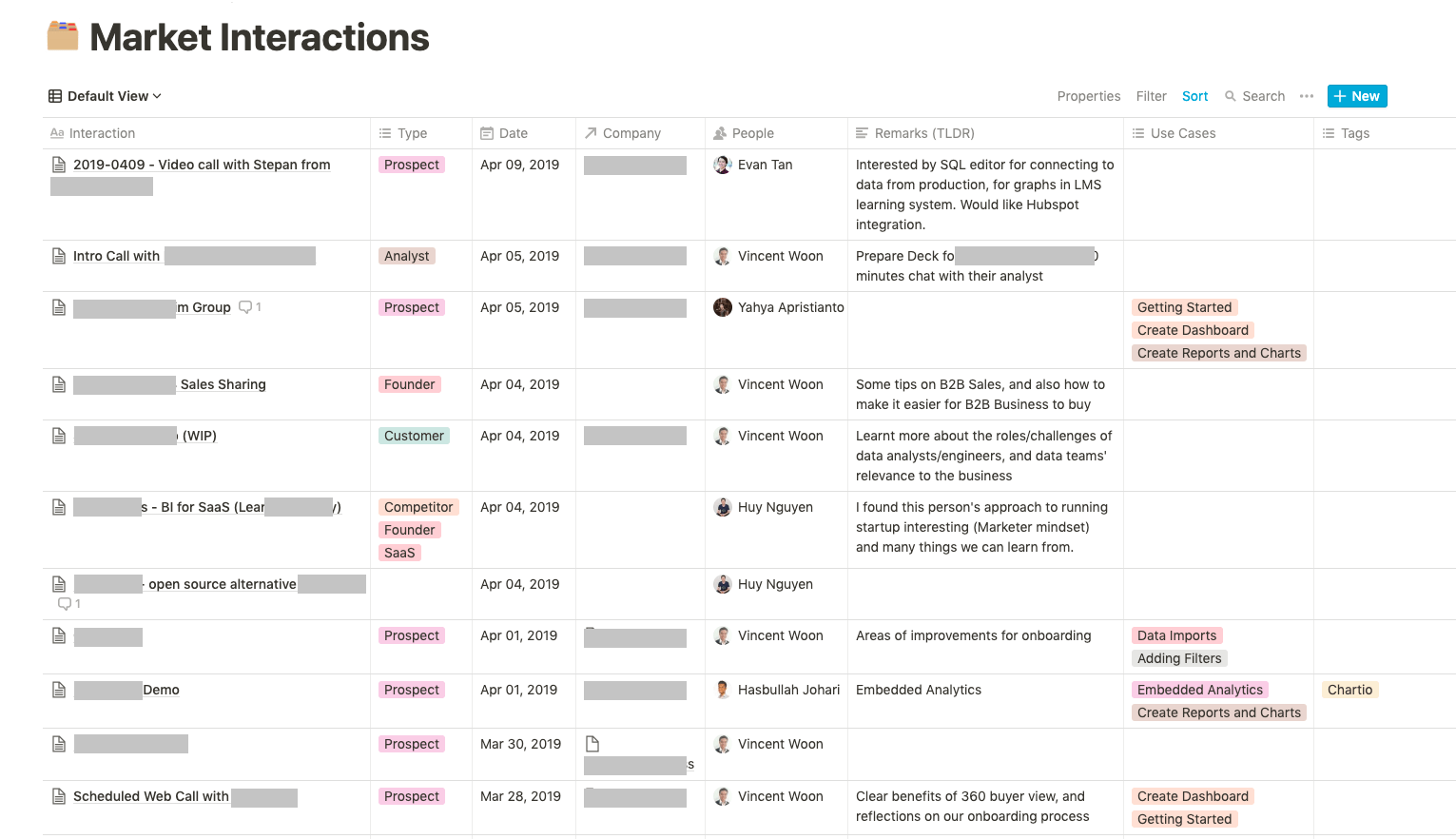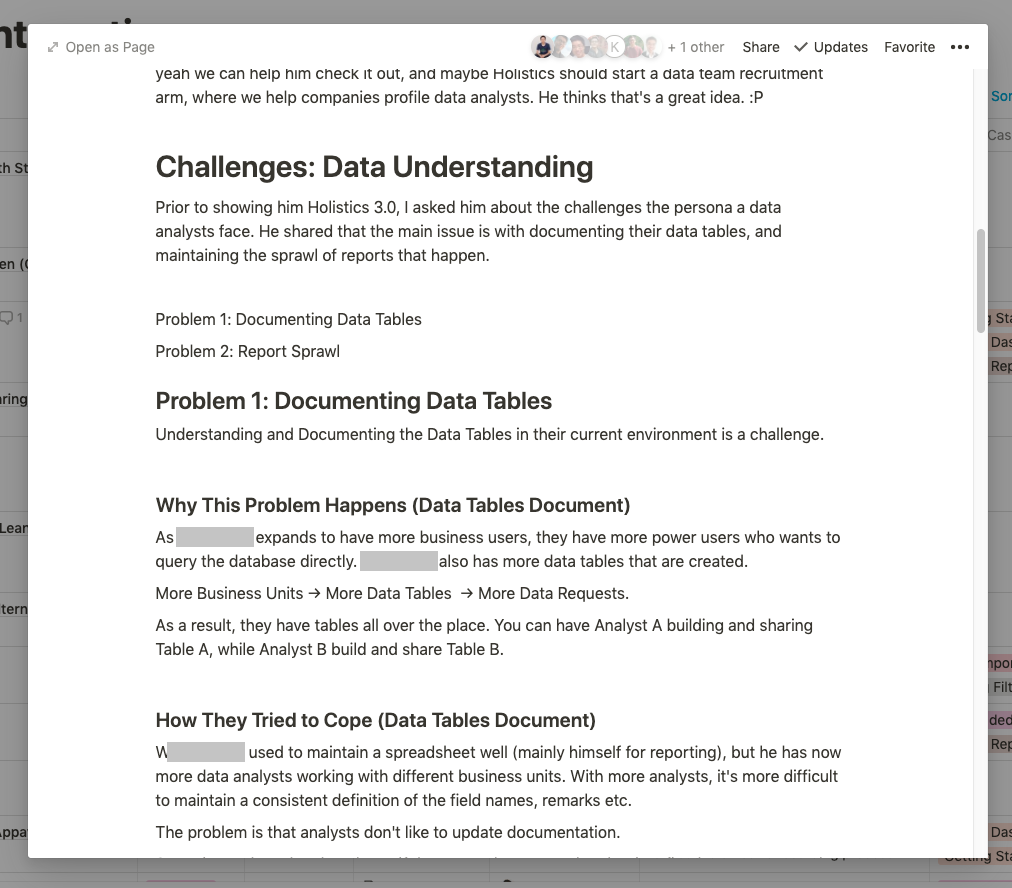Qualitative data-driven: How we boost team alignment and customer empathy by written communications

At Holistics, we have the habit of noting down every interactions the team has with the market. Whether it's customer, prospect or expert in the industry, we'll write a short summary note after the meetings.
Over time, this has turned into a database of first-hand market insights, and become one of the best assets of the company.
The obvious benefit of this is it helps our whole team to clearly align with each other without wasting time on internal meetings. When a new Sales/BD/Product person on board, they just need to spend time reading through the notes to get a feel of the product and the market.
This also helps us stay grounded and close to the customers, the actual users of the products, as much as possible. We regularly reviewed, reread these market interaction notes to re-live the customer's pain points
Another big benefit is motivation for the Engineering team. Every time there's an interesting interaction, I would show it to the entire Eng team (of 20 people) during weekly team updates. This creates strong empathy for the Eng team, the ones who usually lack empathy ^_^
This habit was born because we started out as a remote company with teams in Singapore, Vietnam and Indonesia. So most communications happen over written text. Over time it has grown into the culture & operational process we have today.

We also made sure most notes take less than 15-20 minutes to write and less than 5-10 minutes to read, that reduces the frictions of documenting and reading process.
With this, we have accidentally solved the problem of tacit knowledge transfer in our organization. Reading the notes, our team members can acquire not just facts, but market intutions.
Most organizations think about data-driven, they think about numbers, spreadsheets and charts. We understand this being a BI company ourselves. But I think what we've done above is also called data-driven, just in a different form.
We call this qualitative data-driven.
No matter how much numbers/data-driven your company is, the most important business decisions are often made by intuition. The importance is whether those intuitions are enriched with data and market insights.
"You collect as much data as you can. You immerse yourself in that data, but then make the decision with your heart." - Jeff Bezos
What's happening in the BI world?
Join 30k+ people to get insights from BI practitioners around the globe. In your inbox. Every week. Learn more
No spam, ever. We respect your email privacy. Unsubscribe anytime.

